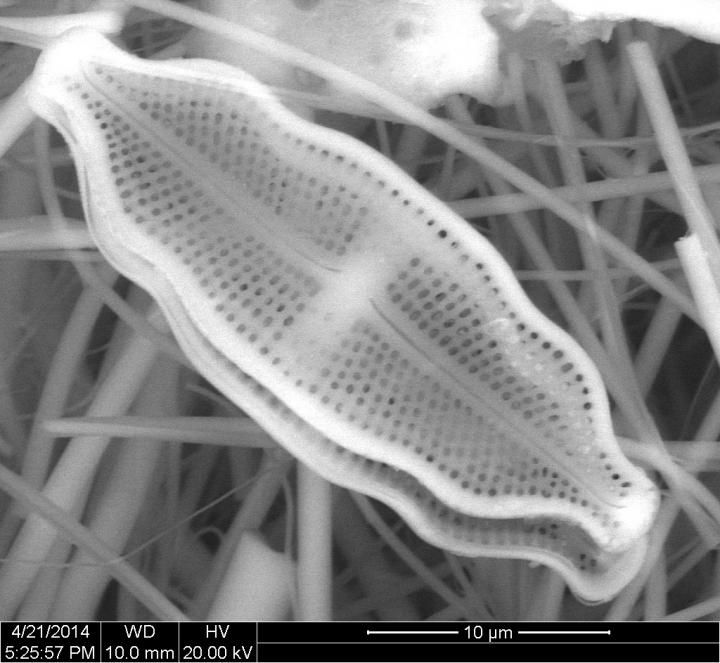Ancient Algae Discovered in Tropical Mountain Ice Cap

Microscopic algae buried in a tropical mountaintop ice cap are helping researchers better understand what the environment was like more than a millennium ago.
Finding diatoms — which are single-celled algae — in an ice cap high atop the Andes in Peru came as a surprise to the researchers, who originally intended to examine their ice samples for possible carbon content. This is the first time researchers have found diatoms in glacial ice from a tropical region, according to the study.
Diatoms, which are a fraction of the width of a human hair, can typically be found wherever there is water. Some are generalists, requiring only water, while others are pickier, living exclusively in salty or fresh water, or thriving only where the levels of certain nutrients, such as nitrogen and phosphorus, are low or high. Regardless of where they are, the organisms are usually at the bottom of the food chain in their habitat.
Diatoms had previously been found in glaciers on Greenland and Antarctica, and other polar and alpine regions, said lead author Sherilyn Fritz, a professor of geosciences at the University of Nebraska. Fritz said that the diatoms in Greenland's glaciers got there by latching onto dust particles in North America and travelling to Greenland on wind power as part of the system involving global dust circulation. [Big Ice: Amazing Images of Greenland's Glaciers]
In contrast, the new research suggests that the diatoms found in the Quelccaya Ice Cap in the tropical Andes of southern Peru had a much shorter commute, Fritz told Live Science. The researchers think that these diatoms likely originated in one of the many nearby high-altitude lakes or freshwater wetlands, because most of the diatoms that the researchers found, like Brachysira vitera and Aulacoseira alpigena, are specific to such habitats. Mountaintop regions are notoriously windy — the diatoms may have been swept up from the lakes by the wind and carried to the icy mountaintop.
Eduardo Morales Luizaga, an adjunct professor and expert in diatoms at the Universidad Católica Boliviana San Pablo Regional Cochabamba in Bolivia, who was not involved in the study, agreed that the wind might have carried the diatoms.
But it's also possible that birds and other animals that drank or bathed in a nearby lake might have carried the diatoms — on feathers, feet or fur — to the glacier, or to the small ponds that can form on the ice during warmer periods. When the temperature drops, it traps the diatoms in an icy tomb, he said.
Sign up for the Live Science daily newsletter now
Get the world’s most fascinating discoveries delivered straight to your inbox.
Although not as abundant, the researchers also found diatoms from global dust in the ice. However, these diatoms were so excellently preserved that it is unlikely they had traveled very far, the researchers said.
The core that the researchers analyzed was taken from around 480 feet deep (140 meters), and included ice that was deposited over a span of almost 2,000 years. The oldest diatoms found in the ice dated to the dawn of the Middle Ages, during the sixth century, and the younger diatoms dated to the later Middle Ages, during the 12th Century.
Lonnie Thompson, a professor of earth sciences at Ohio State University and an expert on ice core paleoclimatology, collected the Quelccaya Ice Cap samples in 2003. The discovery of the diatoms in the ice shows that tropical glaciers have potential for researchers to investigate "how not just diatoms, but other life forms such as ancient microbes survived, thrived and evolved under extreme conditions and under very different climatic regimes," he said in a statement.
Fritz said she was concerned about the rapid climate change-induced melting of the ice cap, and the implications of this for the local people who depend on the ice for water, as well as future paleo-environment research. She said that the ice is "very hard-won, and there's not much of it."
The study was published in May in the journal Arctic, Antarctic, and Alpine Research.
Elizabeth Goldbaum is on Twitter. Follow Live Science @livescience, Facebook & Google+. Original article on Live Science











